Running head-on into a tree isn’t sound policy – even if you are wearing a helmet. Better to avoid running into the tree.
Then you won’t need the helmet.
The government – which is now the chief designer of cars – doesn’t see it this way. It insists that cars be designed to crash into trees – which has the perverse effect of making them more likely to.
They are built with thick windshield supports and high doors and slit-glass, in order to make the structure more able to absorb impact forces from all angles. But this reduces visibility – which increases the chances the driver won’t see something coming that he really ought to be aware of.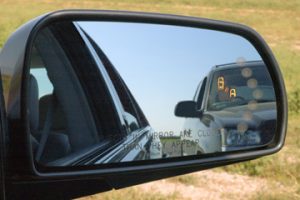
Such as another car in his very large blind spot.
This sometimes results in a test of his vehicle’s crashworthiness.
Wouldn’t it have been safer to have been able to see?
Driving a tank also tends to encourage passivity with regard to one’s safety. People tend to think: The car will protect me – so I don’t have to worry as much about protecting myself. This is foolish – even if the car is exceptionally crashworthy, which only means it takes the hit for the sake of protecting you.
Because it still takes the hit – which leaves you with a damaged and possibly totaled car. Which is likely to cost you time, hassle and money. The insurance mafia may raise your rates even if the crash wasn’t because of anything you did. The damage has still been done – and someone’s going to pay for it.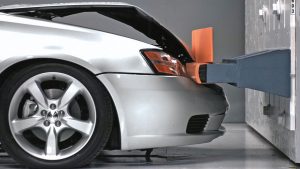
Rest assured, it won’t be the insurance mafia.
The fact is, we all pay for “crashworthy” cars – whether we cause crashes or not – because crashworthy cars cost a fortune to fix, even after “minor” wrecks – and are often just thrown away because they are too expensive to fix relative to what they are worth.
To be saaaaaaaaaaaaafe, new cars are built heavy – structurally – but their exterior body panels are built light and thus, flimsy. They are almost paper thin – and can be bent by hand. You can imagine what happens when they are bent by a tree.
Saaaaaaaaaaaaaaaafety isn’t cheap.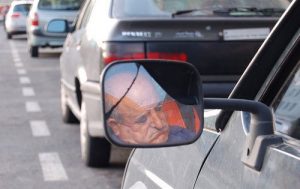
Situational awareness, on the other hand, is free. It – along with baseline competence behind the wheel – are arguably the greatest guarantors of “safety” because they dramatically reduce the odds of being involved a crash at all – including those caused by others.
The safest car, after all, is the car that doesn’t crash.
And that depends on the driver much more than the car.
Constantly check your mirrors, especially when stopped at a traffic light. This is not the time to check email or space out. If you pay attention, you might see someone coming up behind you who clearly doesn’t see that traffic has stopped, that the light is red.
If you see him coming, it will give you time to get out of his way.
This is lot safer than just sitting there – oblivious – and a few seconds later testing how well the back of your vehicle absorbs being rear-ended by a car doing 45, with you doing zero.
Always assume that people do not pay attention to traffic signals – and often fail to signal. Look for cross-traffic before you enter an intersection – regardless of the green light and irrespective of the right-of-way.
Idiot-proof yourself.
Don’t depend on idiot-proofing driver “assistance” technology to keep you safe.
Keep in your lane – by keeping your eyes on the road. Anticipate the need to brake – so it won’t be an “emergency” when the need to brake suddenly arises. If it’s raining, remember your car has less traction.
If you control for that, you probably won’t need traction control.
Be in control of your car, in other words. That controls for a lot. Makes up for a lot, too. A Fiat 500 that avoids an accident is safer than a full-sized Mercedes S-Class that doesn’t.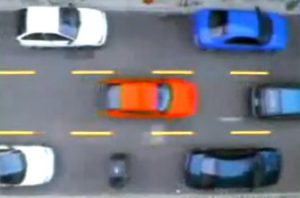
Of course, size does matter – if you crash. In that case, bigger is better. And body-on-frame is best of all.
Underneath such vehicles – which are mostly full-size trucks and SUVs based on full-size trucks (e.g., the Chevy Silverado/Tahoe) you will find what amount to heavy steel girders placed longitudinally – like battering rams – along the length of the vehicle, right and left. These are braced laterally, for added strength – and the body is bolted to this massive steel lattice.
If something hits you that hasn’t got these under-the-floorpan battering rams, they’ll be the worse for it.
Trucks and SUVs are also higher up relative to most cars, which is another advantage in a collision because the lower car will impart much of its impact forces (if it hits you) to the lower/structural parts (the frame) rather than the body, which is much more fragile.
And if you hit it . . . well, be glad you’re not the it being hit.
On the other hand, a smaller/more agile car with excellent sight lines/visibility can be less likely to crash than a big, heavy car that’s less maneuverable and has poor outward visibility driven by someone not paying attention – because they think they are driving a saaaaaaaaaaaaaaaaaaaafe car.
…
Got a question about cars – or anything else? Click on the “ask Eric” link and send ’em in!
If you like what you’ve found here please consider supporting EPautos.
We depend on you to keep the wheels turning!
Our donate button is here.
If you prefer not to use PayPal, our mailing address is:
EPautos
721 Hummingbird Lane SE
Copper Hill, VA 24079
PS: Get an EPautos magnet (pictured below) in return for a $20 or more one-time donation or a $10 or more monthly recurring donation. (Please be sure to tell us you want a sticker – and also, provide an address, so we know where to mail the thing!)
My latest eBook is also available for your favorite price – free! Click here. 


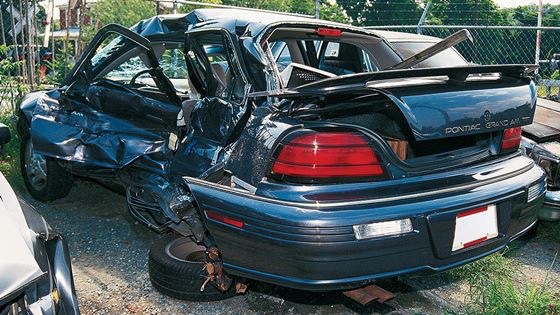





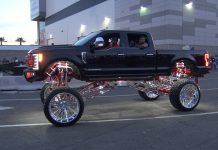

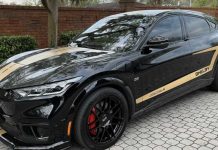
Another excellent article. As long as the government is calling the shots, none of us will be safe. I hate the distractions of the supposedly idiot-proof add-ons because you find yourself looking at them more than the road. Something beeps or buzzes or lights up and you have to stray your attention from driving to discover what is going on. I don’t know how many times I have not seen a vehicle lost in the front pillars at just the right moment. After driving more than a million miles, much of it for work purposes, under all kinds of conditions, I believe it has been me and my decisions (with some timely luck thrown in) that have kept me out of any serious trouble. I try to lay back while driving (not hang out in the major traffic) and not get caught up in the pack. I try to find a spot where there are fewer vehicles around me. I seldom speed because I fear it will get me into a situation that is threatening that much faster. I don’t drive nearly as many miles as I did while working, but I see some strange things that drivers do and the game is avoiding the stupidity. Not that I haven’t done some stupid things over the course of driving since 1965. I just try and do fewer than the next guy.
Fatality rates began to jump in 2012-13, after a sufficient number of cars with the fortified A, B and C Pillars and the small windows infiltrated the automotive mix. Poor outward visibility and the deployment of touchscreens used for climate and audio control have been responsible for an uptick in accident rates.
In addition, design for crashworthiness has also driven up insurance rates through more collisions and vehicles too expensive to repair. No one besides Eric Peters even begin to understand the problem.
My mother drives SUVs because she needs the space. When I have to drive one of them, I’m frequently afraid to change lanes because you CAN NOT SEE out of the rear quarters. She has, on several occasions, nearly run people over because of this. I’ve got it a little better with a race driver’s mirror trick (hint – you actually shouldn’t be able to see your own car in your side mirrors), but I still hate the complete lack of over-the-shoulder visibility and I also hate the idiotically thick windshield pillars that constantly get in the way when trying to look ahead through corners.
I tend to drive older, smaller cars for myself because they’re all I can afford; the visibility (even in a station wagon!) is a revelation. It’s incredibly freeing being able to change lanes without wondering whether you’re going to PIT maneuver yourself on someone cruising in your blind spot.
As long as your mother can afford to buy it, maintain it, insure it, and fill er up with gas, what she drives is her OWN GODDAMNED BUSINESS. Far be it for some “bureau-rat” to decide FOR her what she “Needs”. Shit.
I don’t think I was saying what you’re implying, just giving a little background to why she prefers them. (She hates the massive blind spots too!)
I live in a half-ton cargo van with no blind spots. If it isn’t hiding behind me (where I’m not likely to hit it), I can see it in one of the two regular side mirrors with mini-spot mirrors.
If you can’t deal with blind spots, the truck drivers among us will consider ourselves lucky that you don’t drive a 70-foot tractor trailer.
@ShogunChuck- Maybe your Mother could buy you a pilow for you to sit on while driving her car. That way, you could see out better, and see what is in the mirrors better too.
Dude, what is even your problem here? I’m trying to agree with the article. The only problem with visibility is the frickin’ pillars (even the headrests aren’t that much of a problem), which (as Eric says) are a borderline nonissue in older cars.
The Commonsense Defensive driving skills everyone should know and abide. Same situational personal space skills everyone should use in ‘Polite Society’. Hose out the gore, straight the dents, sell it to a new driver.
I believe people drove safer in the muscle car era before safety took over because you can’t keep control while sliding out of the seat, and people had fewer distractions and better visibility as Eric Stated. Aside from Inflation the price of vehicles is outrageous. For a cramped, poor visibility, over engineered, can’t see where the bumpers are, transportation tool.
So true! Your descriptions remind me of Quentin Tarantino’s masterpiece “Death Proof”
One day I was at a T intersection. I’m on the T’s vertical and I’m planning to turn left onto the T’s horizontal. A car coming from the left has its right blinker on signaling a right turn from the T’s horizontal onto the T’s vertical. I start moving forward to make my left turn.
Guess what? The vehicle approaching from the left goes straight along its merry way ignoring its turn signal. Crash avoided by inches due to my reflex braking. From that day on, in an intersection like this, blinker, shminker, I wait for the vehicle to start to make its turn before proceeding forward. 99 times out of a hundred they turn if they say they’re going to turn but all it takes is one blissful false signal and… boom, splatter, crunch. And then when the driver says to the nice officer who pulls over, “He’s lying. I never had my blinker on…”
That’s why I ALWAYS wait for someone to COMMIT to the turn first! Just because someone has their turn signal on doesn’t mean they’re going to turn. I always wait for them to slow down and start the turn before I go in a situation like yours.
Then there are the ones that change their minds after they’ve “committed” to the turn.
Once they get beyond a certain point, they can’t decide to go straight again; they have to go through the turn.
Oddly enough, the driving tips you offer are how were we taught to drive 40-odd years ago. It was called “defensive driving”. I have attempted to teach this to my own kids, who were utterly disserved by what currently passes for drivers education. Results are unclear at this point.
My older Dodge Caravan minivan (2001-2007 series) has no crash protection — the hood is so short it’s a joke, and the metal is thin/flimsy, and on top of that the front wheel wells are only HALF metal, half of it is just the plastic wheel well liner. So if I ever crash into something I’m dead LOL. I might as well not bother wearing my seatbelt.
I wish they’d make cars actually safe… with longer hoods and thicker metal for the front fenders & hood. If you watch the crash test videos (done by NHTSA) — the cars crumple like a soda can without slowing the car down — that proves the hoods are too short and the metal is too thin. Most cars nowadays are NOT safe at all, they’re very UNSAFE!
My current van is the first vehicle I have owned that has air bags. They all had seatbelts, which I was well trained by my father, while he was teaching me how to drive, to wear. The seatbelt I put on for the drive to the library on a rainy day was the reason why I suffered no injuries when I totalled my old Pontiac into a newer Pontiac. Neither setbelts nor air bags have noticeably increased my accident rate. In fact, not even the continuous decline of the driving ability of almost all other drivers hasn’t increased my accident rate.
If we are destined to be spied upon by all future vehicles, the least that we should demand is that the spying lead to the removal of willfully inept and downright incompetent drivers, rather than the justification of an insurance discount for drivers that go without being involved in an accident for 6 months. My insurance agent told me last year to expect for my annual premium payment to be discontinued. Instead, my full year renewal came like usual, much to her surprise and delight. We both had to wonder how much my threat to find a new insurer that offered a full year premium still (they are getting very scarce) caused my insurance company to think better about running off a customer that has never filed a claim because of never having had an accident. Maybe it was the fact that I had dropped Progressive when they ended my full year premium, through the same agent that rewrote me to my current insurer. Even a 30 year clean CDL can’t stop annual rate increases anymore.
If the objective is to design a “crash-worthy” vehicle that performs better in event of a violent collision, even though said damage will “total” it, then it’s done its job. This is mainly dictated by what Eric terms the “Insurance MAFIA”, as even the more expensive rides are still less costly to replace than hospital stays, rehab, corrective surgery, and so on.
American cars of the 1960s and 1970s were inherently “crash-worhty” simply b/c they were built like TANKS with hubcaps! Plus, the sheet metal was thicker (and deliberately heavier, it helped the ride!), and the labor cost of a decent body man was affordable…so a body shop could pound dented fenders rather than get a replacement. I recall a story that my father told me of the “indestructible” 1941 Plymouth that my Grandpa bought as a commute car for my Grandma, whom had a job in Fresno. Eventually she got a nicer car and the Plymouth became the “beater”, at one point a farm hand, some young Mexican kid, rolled it (he was ok), and the roof was crumpled in. They took the car to a freelancing body man, whom had a second job at Jerry Turner’s (folks in the Fresno area know of whom I speak), he found a totalled Plymouth of the same vintage with a good roof, pillars, and doors. He cut the old roof off its chassis and, after cutting the like portions away on the Plymouth, welded it in place. The workmanship was so good it was hard for even the state inspector to find the welds, he was amazed that this car had been saved as it had! But those were the days when a craftsman could employ his ingenuity…nowadays, if he tried to register that vehicle, the DMV would refuse on the grounds of s-a-a-a–a-a-f-t-e-e-e-e, as the last thing they want is to see the successful salvage of vintage iron.
I had a car that looked perfect, was so tight it was better sounding on the road than a brand new one. Turns out, the entire roof had been replaced. It was quite possible the tightest car I ever had.
The tightest pickup was my 93 Xcab Chevy. I replaced the door bushing and the strikers and put new(better than factory)gaskets on the doors. You couldn’t even hear the 6.5 Turbo Diesel inside.
OTOH, Ford and Dodge 93 diesels were obviously diesels inside with the Ford being the loudest and roughest(all 4WD). You either had to run at least 50 on a washboard road in that Ford or creep at 5 unless you wanted the rear to catch the front every 50 yards. It was a decent pickup if you could stand the ride. My friend who bought it had just traded a 4WD 3/4T 82 model 6.2(quad shock front) for it. He didn’t last long with that ride and noise.
It used to irritate the hell out of me when I would pull up to someone who had a gap between them and the car in front that was big enough to fit at least two cars. Then one day, I just happened to glance in my rear view mirror as a pick up slammed on his breaks way too late. I was at the crosswalk so I just pulled forward into the intersection to allow the pick up room to stop.
Now I leave a gap in front of me as well, not enough to fit two cars, but enough to give me an escape route.
Keeping a healthy distance away from the vehicle in front of me is probably the number one thing I’ve done to reduce stress over the years.
Continuing to increase it when someone butts into it is more important than having it in the first place. If nobody ever butts in, you should probably increase it anyway.
Leaving 30 feet between my big rig and 3 welder rigs in front of me saved those small trucks when I was run over from behind by a sand frac truck, a W880 KW so when his trailer axles caught the back of my trailer, it knocked my rig forward about 20 feet, ruined his trailer and mine and dug a big gouge down to the base in the pavement. I always leave a good gap in traffic.
Many studies have show the fastest way for traffic to get away from a light is to have 2 car lengths between each car. I know, in a perfect world, everyone would take off at the same rate but that’s never going to happen. Even if that car in front of you out-accelerates you so you feel compelled to speed up even more, when his rear-end comes up with brake lights on you may very well not have the room to stop. It’s one of those cars 3 or 4 places in front of you that will cause a 3 or 4 car accident. And it’s always that person that won’t get involved in the accident and putter on away leaving carnage behind them, obliviously.
Same rule applies with those pesky lights that aren’t timed right. Don’t you hate it when you’re watching a light as it turns from green to yellow, and you immediately hit the brakes only to realize that you simply can’t make it to a stop in time?
I was hauling grapes a few years ago, and was empty, but I forgot to disconnect the air lines to the second trailer. I hit the brakes and for some odd reason, no one in the intersection ahead of me was entering on their green light. Then I glanced out the right side of the cab and saw the back end of the second trailer passing me. The grape bins were empty and banging around in the billowing white brake smoke, but I couldn’t hear them from all the noise inside the cab. I let off the brakes, hit the horn and just drove through the intersection as everyone else waited. The two cars looking at each other from each side had enough sense to look each way, and notice the disaster approaching.
I’ve also done the opposite where I have both trailers loaded and forget to hook up the back brakes until I just go flying through a red light with both feet stomping on the brake peddle. I drive them so seldom that doubles just aren’t my thing.
That’s likely done to forestall a CARJACKING. If you get right on the ass of the car in front of you, all the “homies” have to do is likely get rid on your tail, then a few of them jump out, holding their sidearms “Gangsta style” (turned sideways), and induce you to hand over your ride, and, at times, whatever cash or valuables you have on hand. It’s a good idea not only to leave enough space that you can go around the vehicle in front (if the lanes on the side aren’t cutting you off), but to be vigilant to your “surroundings”, especially the car behind you!
There are no ‘homies’ where I live. If there were, they’d leave after having bigger and better guns drawn on them by everyone they draw on, assuming they didn’t go straight to the morgue.
My home is the ultimate proof of the veracity of Robert A. Heinlein’s most famous quote “An armed society is a polite society. Manners are good when one may have to back up his acts with his life.”
I take it the Second Amendment is actually respected where you live, Vonu, unlike here in Calipornia.
I do the same thing: I keep a cars length distance between me, and the vehicle in front of me at a stop light. During the very looong Winter months, there is always that one idiot driver traveling way too fast on icy roads. Here I am, watching them in my rear view mirror, wondering if they are going to be able to stop in time before they run right into me-with nowhere to go, because I have someone in front of me. Many a rear-end collisions I have avoided, because I had enough room to get into either lane next to me, or have enough room that they did not hit me. I do not care if it pisses people off. Doing so has saved me more than a few times.
When the cost of stupidity, inattentiveness, and distraction is lowered to the driver, you get more of it; hence, the rise of the stupid, inattentive, distracted driver. (This is a key reason though cars are safer, fatalities and accidents rarely fall.)
I’m a motorcyclist. If I want to increase my odds of living, I have no choice but to be attentive and engaged. (I’m continuously scanning my surroundings. I’m most vigilant when approaching intersections.) When you are attentive and engage, you marvel at the cluelessness of most U.S. drivers.
So few can accurately judge distances. Fewer, still, know how to adjust their driving to the environment. By God, if there’s driving rain that reduces vision to nothing and the speed limit is 70 MPH, they’ll drive 70 come hell or high water. On the other hand, if the interstate is wide open and the speed limit is 60 MPH, they’ll drive 60, even if a competent driver (a falling number) could safely drive 85 or above. And, of course, the speed-limit-compliant drive will be sure to drive 60 in the left-hand lane.
It’s depressing because the rise in mandated safety leads to more infantilization and less ratiocination (Hopelessly dependent 30-years-olds living at home and still being called “kids,” but I digress.)
Well-said, Joe… unfortunately.
Your point in re synergies is exactly on the money. Idiot-proofing leads to more idiots… . We are rapidly approaching the moment in history when Depends will be made required wearing, since people will soon lose the ability to control their bladders and bowels; “assistance” will be necessary.
Only a minor fraction of the population will actually need adult diapers, but it will be mandated for all of us anyway. Billions of dollars pissed away and flushed down the toilet…
“If it saves only one person from the embarrassment of s***ing their pants, it will be worth it.”
From what I understand it might be started in San Francisco, for those “experiencing homelessness.”
https://www.openthebooks.com/map/?Map=32504&MapType=Pin&Zip=94103
Agreed. WHY, pray tell, ENABLE the idiots? God bless Darwin!
I’m sure Darwin would answer: “Who dat?”
I’ve been hanging out with old, retired people long enough to know that they always call their kids, kids, unless they are talking about their grandkids, most of whom they call by their first or nick names.
I don’t have any kids, so no grandkids. If I had either, either I wouldn’t be around or they’d be being homeschooled. There is a firm correlation between what grandkids know about smart devices and what they don’t know about anything else. Eventually Alexa will come in a 3-in-1 box because illiteracy is becoming normal again.
Last Christmas I got asked to take the youngest niece out for a driving lesson. She asked to try out parallel parking in my sister’s full-size SUV (a Sequoia), so I drew out a couple of lines on the dirt road to act as a parking space, and she was able to get within a foot of the verge, and she was really happy! Until I pointed out that her tire marks went all the way to the line, and because of the overhang she would have put her rear bumper into the hood of the car parked behind her. And she was “oh well”, until I explained that repairing the bumper alone was going to be at least $1200, and she’d have to repair the other car too, which would have been over $5000 (front-end damage is expensive!) Again, she was “oh well” – the insurance will take care of it. Until I explained how deductibles worked, and that she was going to be on the hook for $750, AND facing 3+ years of higher premiums because she was at-fault. And then there was no more “oh well” from her…
Sadly, there is little that can be done to prevent these sub-humans (NOTE that this includes morons OF ALL RACES who leave their kids and pets in hot cars) from abandoning their so-called ‘loved ones’ to bake to death in their vehicles.
However, there CAN be punishment that MIGHT make others of their kind think once, or twice- prosecute them for motor vehicle homicide IF A DEATH RESULTS.
I seem to have posted this in the wrong section. I am referring to the people who leave their kids or pets in a hot car. Mea culpa.
See Ready Kilowatt’s post below. vvv
Nathan Hail,
“However, there CAN be punishment”
You mean like this? https://www.arkansasonline.com/news/2017/feb/23/arkansas-judge-acquitted-childs-hot-car-death-can-/
“Naramore had been suspended since Feb. 18, 2016, as part of an investigation into the death of his 18-month-old son, Thomas, who was found July 24, 2015, left in a hot car.”
Do you really think they did it with intention to do it?
Punishing a parent who has lost a child in this fashion is the epitome of cruel. I’m sure any number of them would welcome the death penalty to deal with the grief.
One has to wonder why a car that is smart enough to drive down the highway and keep itself in the lane isn’t smart enough to determine that its fob is moving away from it while parked and there is something living still in the car with dangerous temperatures outside. Of course, if it could do that, it could put smart devices in the driver’s space into airplane mode when the vehicle is not in park.
I went into pay next month’s prepaid phone fee today and was told that they couldn’t accept any more payments on a phone which is no longer supported by Verizon. Last month they said it would work through the end of the year. Their only options were a $210 dollar prepaid phone or $5 for 24 months on a smartphone. I’ll hit a different Verizon store, and if I get the same thing, I’ll port the number back to a Tracfone for $19.99, which is where it came from, several years ago. I may wind up on a 911 phone.
I remember seeing an article about a study regarding helmets and skiing/biking. People tend to take bigger risks/pay less attention since we have some flimsy plastic on our noggins!
that argument can be applied to football and boxing as well. boxing gloves and football helmets actually increase long term trauma to the brain because they make the athletes slightly resistant to the short term trauma of getting pounded like a pancake. Also increases risk taking of course. If you want to make those sports safer take the equipment off.
Hey Eric,
I am now the reluctant owner of a 2012 Toyota Pious (I prefer the South Park spelling). My somewhat estranged wife needed a car and my Mom had reached the point where she could not safely drive. Anyway, due to those circumstances, getting the car made sense. God, the thing is awful. If you leave the back headrests in place, you can barely see out the back at all. Of course, I removed those but visibility still sucks. My 2002 Dakota, with a camper shell, provides more visibility.
Also, have you ever discussed the fuel economy fatwas relationship to exterior design? In many modern cars, you can’t see the front of the car. I suspect this is due to creating a marginal aerodynamic advantage. But, being able to see the external parameters of the car, while driving, is also an important “safety” feature that we’ve mostly lost.
Cheers,
Jeremy
But think of all the smug you’re saving!
Not a huge South Park fan, but that episode is truly a classic.
I don’t normally partake of the wit and wisdom of Matt Stone and Trey Parker. How, pray tell, do THEY spell “Prius”? Bet it’s obscene, but then again, so are the Fatwas that made the Prius possible.
Hey Doug,
They spell it “Pious” and mock the virtue signaling of self righteous greens in the episode, “Smug Alert”.
Here’s a clip.
https://www.youtube.com/watch?v=CasJbu2MJp8
Cheers,
Jeremy
Great article
I don’t care one bit for safety, and my truck, while I love it, doesn’t give me my fix. I like small, personal cars with two seats, a stick shift and able to be tossed and speed.
I’ll be honest, my record was terrible, but from it, I know what’s what and I know it’s better to be aware than drive a tank, especially when the sharks (lawyers) are always sniffing for blood.
Like the saying “Less is more”, less safety crap, the more you’ll be vigilant
“The condition upon which God hath given liberty to man is eternal vigilance.”
John Philpot Curran
Something tells me that the way to more liberty doesn’t include less rights, as when Benjamin Franklin said that “Those who would give up essential Liberty, to purchase a little temporary Safety, deserve neither Liberty nor Safety.”
Vigilance only matters to the vigilant.
I think they both didn’t go far enough in their assessment. Being vigilant isn’t going to generate liberty unless one does something about it. Sitting and watching as your rights and liberties are systematically removed doesn’t insure liberty. Speaking up and pointing out that your liberties won’t give you your liberties back either. Vigilance is worthless without the proper actions to retain your liberties.
Speaking of situational awareness:
Dozens of kids die in hot cars every year—a new bill aims to prevent it:
https://arstechnica.com/cars/2019/07/new-bill-would-mandate-warnings-for-kids-trapped-in-hot-cars/
Maybe mom wouldn’t forget about the baby if the baby were in the front seat. But that would mean the baby might be killed by the airbag going off. Or maybe if mom could see into the back seat she’d see the baby. But that would require reasonable seatbacks, not the upsized child seats we have today.
So the answer to meddling is more meddling. And another high cost solution to a non-issue. Only about 30 kids die in hot cars a year. Every one is a tragedy for sure, but as one of the commenters pointed out, at even the bargain rate of $4/per saved life it works out to something like $1.8 million per life. Surly there’s a more cost effective way to save those kids.
Hi RK,
Naturlich.
Aber, it is only puzzling when looked at head on. When looked at from another angle – one sees the true object. Power. Control.
How can a mom FORGET her kid, especially a baby?! Little kids and babies do one thing very well: make lots of NOISE. How could the mom ever be oblivious to the kid’s presence?
Because the world is filled with dead-eye zombies, thats why
How dead-eyed does one have to be to miss a screaming, crying kid? How clueless does one have to be to miss a kid making noise?
I gawr-on-tee one thing. Said forgetful “mom” would NEVER forget her sail fawn in the car! Sort of telling, in a very discivilizational way.
Crusty,
“Said forgetful “mom” would NEVER forget her sail fawn in the car!”
There ought to be a law!
Perhaps a law requiring all drivers with children to pass their cell phones back to the kid in the safety seat.
Common sense cell phone control damn it.
For the children of course.
“3. Leave an item you’ll need at your next destination in the backseat, such as your cell phone, purse, or briefcase.
https://www.parents.com/parenting/better-parenting/advice/7-ways-to-not-forget-your-child-in-the-car/
Dads forget them too. Especially if not part of a routine. You also forget: in a comfortable car, kids are likely to do what they do most of the time, sleep. This happened to one dad (more likely to be punished than moms, of course) who, out of his normal routine, was supposed to drop a kid at daycare. For whatever reason he forgot, drove to work, and, well, you know the rest.
RK,
“Surly there’s a more cost effective way to save those kids.”
Eliminate the easy bake child seat and mandate they be kept in a climate controlled kennel.
And Shirley, the future (mandates) can be viewed at http://www.thudguard.com/
I never heard of this kids (or dogs) dying in hot cars thing in the 70s, 80s, and most if not all of the 90s. Why?
What changed?
Did people simply have more important things to worry about and the news media didn’t cover it? Or is some intersection of the safety cult, power windows, and now being in a lower trust society?
Brent, Eric referred to this phenomenon recently in one of the best articles ever. The kids are strapped in, only a view to the ceiling of the car. Soon they learn to fall asleep. The kids can’t see out the car anyway. Back when there were no seat belts, we kids would move around in the car, full of beans and energy. No kidproof door locks, manual window winders. We were never forgotten, or bored with the car ride. That’s why kids were never left in cars. Too easy for them to get out in our time.
It was unknown, because it wasn’t reported. Death became big news in the 1980s “If it bleeds, it leads.”
Most of us know that mass shootings are actually at a historical low, yet the media and politicians want us to believe they are worse than ever. They also point out that events are increasing but cherrypick their timeline.
Back in the 1970s a man my dad knew committed suicide (or had a fatal accident, no one really knows) by doing a swan dive into the blast furnace at the steel mill. The paper just published his obituary but that’s it. Imagine that happening today, there’d be ongoing coverage of the story, demands for safety reviews and probably a lawsuit by the widow. All presented by the news entity in town with breathless editorialization. Dad said the men put up a “no swimming” sign on the catwalk in his honor.
And bringing down the heavy hand of the law on a distraught parent that, in a moment of forgetfulness (not talking about a situation where the mother leaves the kid in the car while she goes in to bang her b/f and/or smoke a joint), left the child, got distracted or held up, and the tragic result happened unexpectedly and quickly. Common sense and application of JUSTICE would say, “that mother will punish herself far more than any judge could”. Sheesh, if we need to put fear of prison into American parents so they’ll avoid leaving kids locked in hot car interiors, what does that indicate what we think of their ability to parent in the first place?
There’s long already been sufficient laws to deal with bona fide criminal negligence, but as many have already opined, you just can’t fix stupid.
The fix is in putting them somewhere where they are no longer able to endanger children.
good article. i owned a 1998 acura GS for many years. the most amazing sightlines ive seen in any car. Completely panoramic with its low hood. And an engine that loved to rev. Hondas were famous for that back in the day. Civics preludes etc. Thats all gone. Now you get cars like the camaro with tiny gun slits for windows. Or ride in a 5 ton beast as mentioned in this article. oh well.
My 1987 Acura Integra had excellent sight lines as well. It was a little close to the ground, noisy at highway speeds, felt a little light, but it was also a solid car. One early morning, I was traveling on I-64 in Kentucky. I was traveling around 85-95 mph. I spotted a pickup truck with no tailights on and I panic stopped the car, slid off into the median. There were no cable guards at the time, just grass. I maneuvered the car back into the median and back on to the freeway. I was shaken, but both me and the car were intact. Hell, the car didn’t even need a wheel alignment afterwards. The car had nothing in the way of saaaaafety features as we think about them today. No airbags. Just a good suspension setup and good steering. Maneuverable. The lack of cables and guard rails in the median saved me from a huge body repair bill. Those were the days.